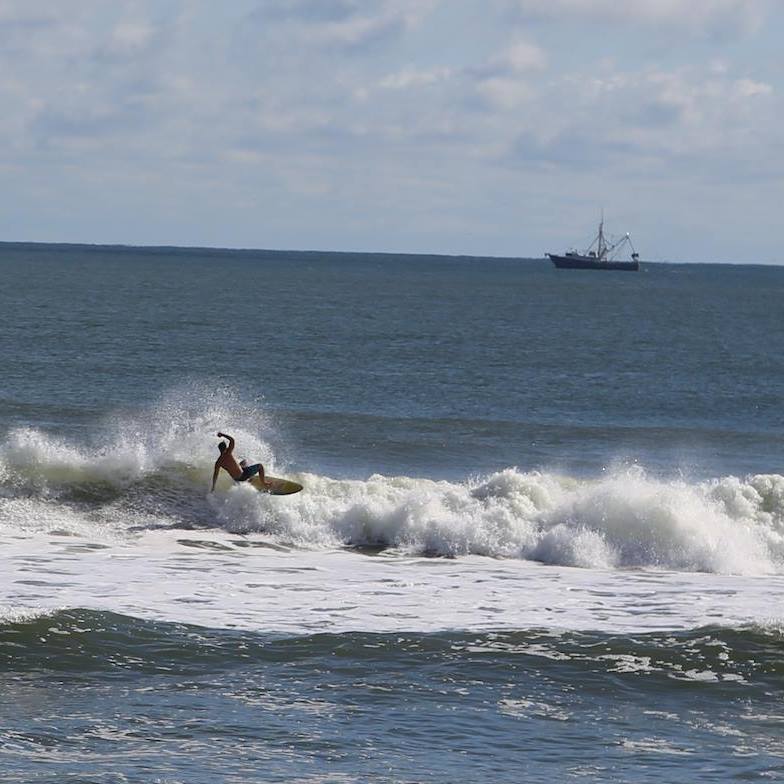Waazzzupppp!
Welcome to my page, friend! I try my best to keep this thing up to date, but you know how it goes...
Some stuff about me
Hobbies
- Fishing
- Mountain Biking
- Rock Climbing
- Running
- Skateboarding
- Surfing
- Snowboarding
- Hiking
Interests
- Data Visualization
- Data Mining
- Electronics
- Instrumentation
- Image Processing
- Machine Learning
- Neural Networks
- Public Outreach
- Software Development
Work
I am currently a 4th year PhD candidate in the Department of Earth, Planetary, and Space Sciences at UCLA where I study the solar wind. As a member of Professor Chris Russell's research group I study disturbances in the interplanetary magnetic field (IMF) known as interplanetary magnetic field enhancements or IFEs. IFEs are postulated to form when the solar wind encounters a cloud of ionized dust that was created by the collision of two bodies in the solar system.
Additionally, I am also an Associate Scientist, II at the Cooperative Institue for Research in Environmental Sciences (CIRES) . In my role here, I work as a software engineer at the NOAA Space Weather Prediction Center (SWPC) supoorting the development of the ground processing pipelines for the Space Weather Follow On-Lagrange 1 (SWFO-L1) mission and the GOES-U Compact Coronagraph (CCOR).
Interplanetary Magnetic Field Enhancements: Dust or Entangled Flux Tubes?
Collaborators: Dr. Christopher T. Russell, Dr. Hanying Wei, Dr. Yingdong Jia
Interplanetary magnetic field enhancements (IFEs) represent a unique class of
disturbances in the solar wind. They consistent of a cusp-shaped enhancement in the magnetic
field strength with a current sheet that is contemporaneous with the peak in the magnetic field
strength. Previous studies have attributed the formation of these magnetic structures to massloading
of the solar wind by nanoscale dust generated from collisions of interplanetary bodies.
However, recent observations with Parker Solar Probe have identified a similar class of objects,
dubbed magnetic increases with central current sheets (MICCs). The presence of these objects
coincided with an absence in a statistical increase of dust impacts on the spacecraft. This led
the authors to conclude that the origin of these objects was likely entangled flux tubes, casting
doubt on the previous dust formation hypothesis of IFEs. In this work we present a
complementary analysis using Solar Orbiter. We report a statistical survey of over 40 IFEs
identified from June 2020 to March 2022, as well as a case study of a peculiar IFE that triggered
burst mode observations.
AGU Poster
Geophysics with the Hubble Space Telescope
Collaborators: Dr. Susana Deustua and Dr. Gonzalo Tancredi As part of routine monitoring programs, each instrument team takes ~daily dark exposures
during occultation (i.e. when HST can't do much of anything because of the Sun). The dark
exposures contain a wealth of information about galactic cosmic rays and how they interact with
CCD's. The goal of this program is to try and probe the geomagnetic field by analyzing the galactic
cosmic rays. I wrote a
data analysis pipeline designed to progammatically download, process, and analyze one month
chunks of dark exposures. So far we have analyzed more than 75,000 images from 5 different
HST CCD imagers generating statistics on more than 1.4 billion cosmic rays. To learn more about our work, check out the links below:
Sky & Telescope
ADASS Poster
Astrophysical Journal
Research
HST FUV/NUV Photometry of the Putative Binary Companion to the SN 1993J Progenitor
Collaborators: Dr. Ori FoxThe goal of this project was to quanitfy the FUV/NUV excess of the putative binary companion to the
SN1993J progenitor star. NUV observations were taken using the F218W, F275W, and F336W filters
on WFC3/UVIS. While the FUV observations were taken with the F140LP filter on ACS/SBC.
My job was to reduce an analyzed the observations to generate photometry
catalogs for the SN1993J+companion object and its neighboring sources.
I helped write a photometry pipeline to build and fit a PSF to the SN1993J+companion object and
its neighboring sources to compute their magnitudes. To learn more, check out the
poster we presented at 232nd AAS:
AAS Poster
